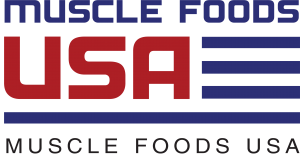High Protein Diets: Good or Bad?
Lose weight while feasting on steak, burgers, cheese, and bacon? All without feeling hungry? What’s not to love? Meat lovers have flocked to high-protein, low-carb plans like Atkins, Zone, Protein Power, and Sugar Busters. While these diets can work, you need to carefully consider the risks and rewards before deciding if one is right for you. How much protein should we have. Protein may be half of your day’s calories. Most of this extra protein comes from animal sources like meat, eggs, and cheese. Often, these diets severely restrict foods like cereals, grains, fruits, and vegetables.
How can a high protein diet be beneficial? When you cut out carbohydrates, you lose weight quickly because you lose water. Then, with no extra carbs, the body begins burning its own fat for fuel. This is called ketosis. This may make dieting easier because you feel less hungry. But ketosis can cause headaches, irritability, nausea, kidney trouble, and heart palpitations.
A very high protein diet is not recommended. Too many fatty meats and dairy foods can raise your cholesterol and risk of a heart attack. Not eating vegetables and grains robs your body of fiber and important nutrients. But high-protein diets can help fight obesity. A more moderate diet, which cuts fat but doesn’t cut too many carbohydrates, may work safely.
When you start a high-protein diet the most nutritious plans are low in fat and include some carbs. Avoid extreme plans, with huge helpings of fatty meats and not many vegetables and grains.
Here are the different types of protein that are lean and with a lot of great benefits:
Nothing says protein like a nice, juicy steak. And if you choose a lean cut, you will get all of the protein with far less fat. In fact, a lean cut of beef like a top round steak has barely more saturated fat than a similar-sized skinless chicken breast.
Chicken and poultry pack plenty of punch in a high-protein diet. If you choose white meat, you’ll get a lot less fat than if you eat dark. To slim your meal down even further, remove the skin, which is loaded with saturated fat.
Pork offers plenty of protein without too much fat, if you know what type to buy. Look for tenderloin, top loin, rib chops, sirloin steak, or shoulder blade steaks.
Fish is a no-brainer. It’s loaded with protein and almost always low in fat. Even the fish that have more fat, such as salmon or tuna, are good choices. That’s because the fat in these fish is generally the heart-healthy kind known as omega-3 fatty acids. Most diets don’t contain enough of this good-for-you fat that may lower your risk of cancer, arthritis, and heart disease.
Eggs do have a lot of cholesterol, but one a day is safe for healthy adults. The yolk has all of the cholesterol and less than half the protein, so you might opt for egg whites. But even if you eat the yolk, remember that only a small amount of the cholesterol in food gets into your bloodstream. Saturated fats and trans fats are more likely to raise your cholesterol levels.
There are different option for vegetarians and vegans like Tofu, soy burgers, and other soy-based foods are nutritious plant-based sources of protein. Beans pack a powerful one-two punch — they are loaded with protein and are full of fiber. Along with protein, fiber helps you feel full longer and also helps lower cholesterol. Milk, cheese, and yogurt are not only protein-rich; they also provide calcium for strong bones and a healthy heart. Low-fat, nonfat, or reduced-fat dairy products can help you keep calorie counts down. Most high-protein diets limit grains, so make sure the grains you do eat are pulling their weight. Stay clear of white breads and pastas and choose their whole-grain cousins instead. Whole-grain versions are rich in fiber, which can be lacking in a high-protein diet. High-protein cereal or energy bars can give a quick boost, too. Just make sure they’re not high in sugar or fat. Make sure you leave room for fruits and vegetables in a high-protein diet. These nutritious foods contain powerful antioxidants that aren’t found in most other foods.

Comments are closed.